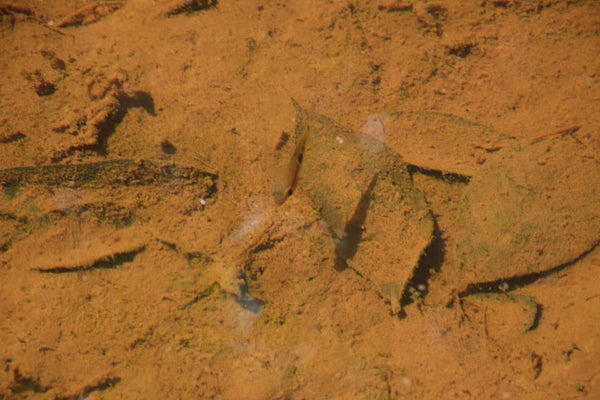- Continue Shopping
- Your Cart is Empty
Functional aquascaping and the feeding habits of our fishes: A different direction?

In other words, aquascaping your tank to support the various feeding adaptations of different fishes!
If you think about it, a typical tropical stream has a variety of different feeders. Many of our favorite fishes may be classified as "periphyton" grazers, which have small mouths, fleshy lips, and numerous tiny teeth for rasping. "Periphyton", by the way, is defined as "...freshwater organisms attached to or clinging to plants and other objects projecting above the bottom sediments." Ohh- sounds good to me! This stuff is abundant in all sorts of streams, but can be limited by availability of light and solid substrates.






Now, there are a fair number of fishes that consume aquatic plants, or more properly- parts of aquatic plants- as part of their diet, such as Doradid catfishes and Anomostids. Often, they're also consuming epiphytic algae and such in the process. Now, I'm not suggesting to utilize plants in your aquascape for feeding purposes; however, it's not entirely out the the realm of reality to do this, right? Now, a lot of omnivorous fishes in the wild are removing the periphyton from the roots of floating plants in some streams, so it may make some sense to utilize these plants as sort of "for culture stations" in your aquascape to support the feeding habits of many fishes, such as characins, Danios, Barbs, etc.


Stay creative. Stay curious. Stay studious. Stay innovative.
And Stay Wet.
Scott Fellman
Tannin Aquatics
2 Responses
Scott Fellman
Good to hear of this experience, Garrett!
I think it’s that problem, as you’ve stated, of continuously replenishing the supply of living food organisms…trying to “stay out in front” of the fishes as they decimate the populations! Ive done stuff like this with reef tanks: “Pre-stocking” with food organisms, and than continually restocking throughout the tank’s functional lifetime. It’s possible, but requires a lot of effort! I do like the duckweed idea, myself (As a vegetarian myself, I’d ALSO pass on the “Duckweed Burger” concept, lol!
-Scott
Garrett
I’ve seen this happen with both plants and insects in my aquaria. I accidentally cultivated quite a healthy population of copeopods and worms in one of my first tanks. Then my platies reproduced, and while I had almost 100% fry survival, they pretty much wiped out the microfauna. However, once they grew older and I got rid of them, the bugs came back… I think that if you are able to start with a significant population of micro- and macro-fauna, you will see it blossom and shrink depending on the rest of the tank’s needs… just like in nature!
Of course, this depends on who’s in the tank. Yoyo loaches can completely eradicate snail populations in days (even the tenacious trumpet snails) and while I have only anecdotal evidence, I’m fairly certain that my kuhli loaches wiped out the hundreds of ramshorns in my one tank, either by consuming the snails or simply devouring their eggs and outlasting the adults.
The key may be in providing enough cover for the “food” organisms (difficult enough with the slippery kuhlis). I’ve begun experimenting with heavier layers of leaf litter, hoping that this will help both bugs and fish to thrive, acting as an in-tank “refugium”, although it’s too early in the game to tell whether this will work.
When it comes to plants, it helps to have large quantities of rapidly-reproducing ones. Hornwort has been a treat for some fish. Green algae, much-maligned by the aquatic community, is great for grazers. Duckweed is another good one – yes, it will cover your water surface, clog your filters, and not have exotic colours or shapes, but it’s also a great plant for blackwater, and a prime source of vegetable protein – so good, that in some parts of the world it is cultivated for human consumption! (As a vegetarian, I have yet to try a duckweed-burger though!) My Endlers and my paradise gourami will occasionally be seen snacking on the roots and leaves of this prolific plant.






Scott Fellman
Author